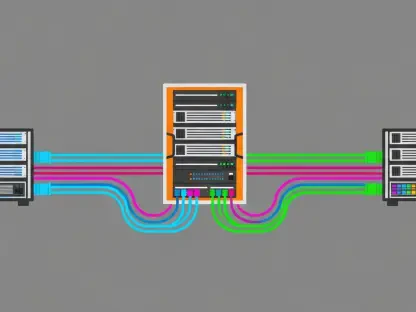Predictive analytics is emerging as a game-changer for the florist industry. From managing inventory to optimizing marketing efforts, the use of data-driven insights can make a significant difference in how florists operate their businesses. By understanding how predictive analytics can be applied, florists can ensure they are making informed decisions that benefit both their operations and customers. Leveraging the power of predictive analytics enables businesses to stay ahead of market demands, tailor their strategies effectively, and ultimately enhance customer satisfaction and profitability.
Anticipating Seasonal Demand
Predictive analytics tools allow florists to accurately forecast demand for different seasons and holidays. By analyzing historical sales data and current market trends, florists can anticipate which flowers will be in high demand. This foresight enables them to make strategic inventory purchases, ensuring they have enough supply without overstocking. By knowing the precise types and quantities of flowers needed in advance, florists can avoid the pitfalls of both understocking and overstocking, which can lead to lost sales opportunities and wasted inventory.
Moreover, predictive analytics helps in reducing the risk of running out of popular arrangements during peak seasons. For example, by knowing that pink tulip arrangements tend to see a 40% increase during spring, florists can order accordingly, minimizing lost sales opportunities. This proactive approach to inventory management means that customers are more likely to find what they are looking for, enhancing their shopping experience. Anticipating and preparing for fluctuations in demand also contributes to smoother business operations, with fewer last-minute adjustments needed.
Dynamic Pricing Strategies
Utilizing data-driven insights for pricing strategies proves to be advantageous in maintaining profitability throughout the year. Instead of static pricing, florists can adjust prices based on demand patterns. This dynamic approach ensures that prices are competitive during peak times and attractive during slower periods. By responding to real-time data, florists can optimize their pricing to reflect both the market conditions and customer preferences, achieving a balance that maximizes revenue and maintains customer satisfaction.
For instance, luxury bouquets can be priced higher during specific periods when demand is naturally high, while budget-friendly options can be promoted during off-season months. This flexibility not only maximizes revenue but also keeps customers engaged year-round. By having the ability to adjust pricing dynamically, florists can offer promotions and discounts strategically, enticing customers during slower periods without sacrificing profits during high-demand times. This strategy ensures that florists remain competitive and relevant in a fluctuating market.
Efficient Inventory Management
Managing inventory efficiently is crucial given the perishable nature of flowers. Predictive analytics can identify which flowers sell quickly and which tend to wilt on the shelves. By aligning orders with actual sales data, florists can significantly reduce waste and improve their profit margins. The ability to predict which flowers will be most in demand at various times of the year enables florists to maintain optimal stock levels, avoiding the pitfalls of both excess inventory and shortages.
Understanding customer behavior through predictive analytics enables florists to order just the right amount of each type of flower. This insight helps in avoiding overstock of less popular flowers while ensuring a healthy supply of best-sellers. Reducing waste not only contributes to better financial performance but also aligns with sustainable business practices, which are increasingly important to today’s consumers. By focusing on efficient inventory management, florists can keep their products fresh, ensuring top quality for customers.
Uncovering Hidden Sales Patterns
Advanced POS software powered by predictive analytics can uncover sales trends that might not be immediately evident. For example, while wedding bookings might decrease in fall, corporate orders could see a rise. Identifying these hidden patterns allows florists to tailor their marketing and product offerings accordingly. By understanding these nuances in customer demand, florists can shift their strategies seasonally to align with actual purchasing behaviors, increasing their relevance and appeal to different customer segments.
Florists can shift their focus and resources based on these insights, promoting corporate gift arrangements during times when wedding bouquet sales are low. This strategic pivot ensures that they are always targeting the right customer base with the right products. By adapting their marketing efforts to reflect real-time sales data, florists can avoid missteps in targeting and maximize their outreach. This adaptive approach ensures better alignment with market demands and a more efficient allocation of marketing resources.
Strategic Partnerships
Predictive analytics can also guide florists in establishing beneficial local business partnerships. If data shows a spike in flower sales when a nearby bakery promotes wedding cakes, florists can collaborate with the bakery to offer bundled deals, enhancing customer appeal and driving sales for both businesses. These mutually beneficial partnerships are driven by tangible data, ensuring that collaborative efforts are more likely to yield positive results, rather than relying on assumptions or trial and error.
Such partnerships are based on solid data rather than assumptions, increasing their likelihood of success and ensuring that promotional efforts are synergistic and mutually beneficial. By identifying opportunities for collaboration with complementary businesses, florists can craft compelling bundled offerings that appeal to shared customer bases. These strategic alliances not only expand market reach but also add value to the customer experience, creating win-win scenarios for all parties involved.
Targeted Marketing and Staff Scheduling
Predictive analytics is revolutionizing the florist industry, greatly impacting everything from inventory management to marketing optimization. By harnessing data-driven insights, florists are able to make well-informed decisions, enhancing both their internal operations and customer relations. Predictive analytics allows these businesses to anticipate market demands, tailor their strategies with precision, and ultimately boost customer satisfaction and profitability. In practice, florists can use predictive analytics to forecast demand for different flowers, ensuring they stock the right quantities and varieties at the right times, thereby minimizing waste and losses. Moreover, these insights can guide marketing efforts by identifying customer preferences and trends, helping florists to target their promotions more effectively. Embracing the power of predictive analytics means that florists not only cater to their customers’ needs more accurately but also run their businesses more efficiently, gaining a competitive edge in a dynamic market.









